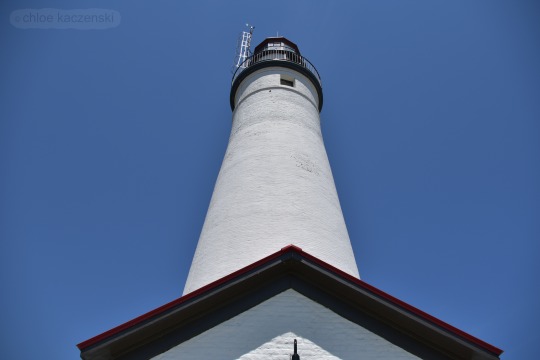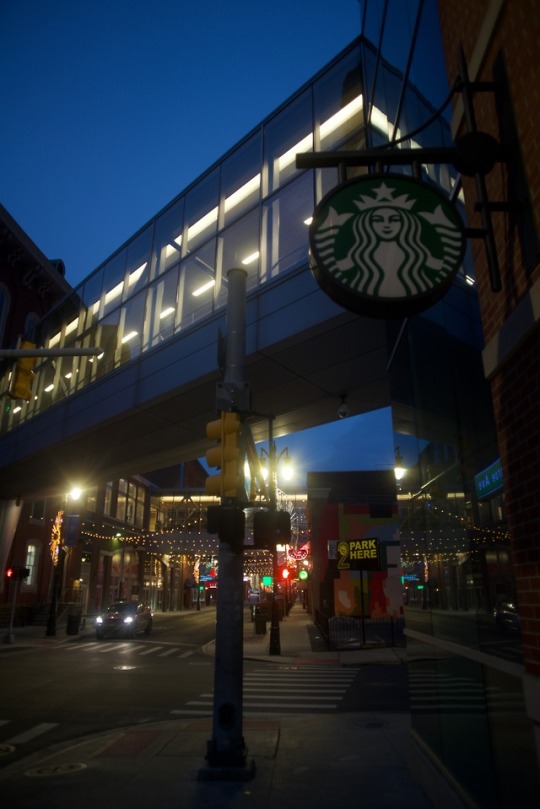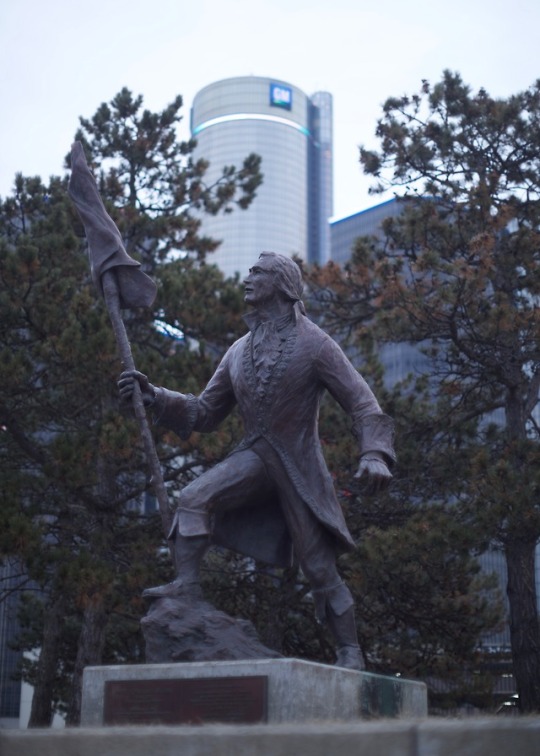#Fort Gratiot
Explore tagged Tumblr posts
Text



Fort Gratiot Lighthouse in Port Huron Michigan. June 2, 2017
0 notes
Text

Fort Gratiot Lighthouse, Port Huron Michigan
#original#photographers on tumblr#original photographers#mine#landscape#aesthetic#lighthouse#pure michigan#photography#my photgraphy#moody#moody aesthetic
43 notes
·
View notes
Text

Michigan's first trails were not made by native Americans but ranging buffalo herds in migration. This was especially true on the St. Joseph trail in Southwest Michigan. The major trails in lower Michigan tended to link Indian settlements of Mackinac, Detroit, Saginaw, and Niles. The area around Saginaw had the most native American settlements in the Great Lakes region.
Noted below are native trails that we travel everyday.
Shore Line Trail - A minor trail starting near Toledo and hugging Lake Erie's shore, the Straits of Detroit. Past Fort Gratiot and Lake Huron to a spot near White Rock. White Rock was considered a solemn spiritual place of offering. Today this route is mirrored by Lakeshore Drive from Detroit to Lexington and M-25 north. This trail continues north along the entire shore to Cheboygan. It was considered a minor trail as travel via canoe was preferred along this route. Michigan chose to utilize much of the original Native American trail along Lake Huron and Saginaw Bay to create M-25. Paving of Michigan's First Scenic Highway was started in 1933 and completed in 1940.
Saginaw Trail - One of the oldest trails, this Sauk trail system, went from the Straits of Detroit to Saginaw. Today this starts at the Detroit River and heads northwest up Woodward Avenue to Pontiac, then continues up Dixie Highway through Flint to Saginaw.
Sand Ridge Indian Trail - An ancient trail from Saginaw to Port Austin in Michigan's Thumb. Used primarily for access to the rich hunting ground of the Thumb. Today, M-25 follows much of the same route. However, the old trail is still evident and marked as Sand Road in Huron County. A major canoe passage across Saginaw Bay occurred at Oak Point via Charity Island to reach the AuSable River.
St. Joseph's Trail - A major east-west system called Route du Sieur de la Salle and the Territorial Road. When the Territorial road was first built from Plymouth to St Joseph, a portion of the road was ‘corduroy.’ which means wood lo
25 notes
·
View notes
Text
Hiya!! Just a reminder that the preorder for these bad boys ends tomorrow (21st)!!

#saw franchise#adam saw#lawrence saw#saw movies#saw 2004#saw x#saw#adam faulkner stanheight#adam stanheight#lawrence gordon#doctor gordon#jigsaw#dakimakura#horror#horror movies#saw bathroom
45 notes
·
View notes
Note
Have you ever had the doubt that they have moved and he is commuting? I mean, I don't know how it works, but why is her mailing address for work Fort Gratiot and not Denf. or Ildy? It must not have been long from when she started working at that hospital (which by the way has bad reviews) to when she got pregnant, and I honestly don't see her commuting every day any more than I ever believed she was all alone in the country polishing floors and changing diapers.
maybe she has a p.o. box?
3 notes
·
View notes
Text
Hurricane Rafael disrupts Cuba’s power grid and shifts course as it heads into the Gulf
Hurricane Rafael moved away from Cuba Thursday morning after striking the island as a Category 3 hurricane, leaving the entire power grid down for about 24 hours.
A major shift in the storm’s projected path has reduced the threat to the U.S., while increasing concern for Mexico’s Gulf Coast.
Now a Category 2 hurricane, Rafael entered the Gulf of Mexico Wednesday night after crossing Cuba. It’s expected to track westward across the southern Gulf over the weekend, remaining at sea before making a weaker landfall early next week.
Weather Forecast For 92507 Riverside CA:
https://www.behance.net/gallery/204198943/Weather-Forecast-For-92507-Riverside-CA
Cuba experienced the worst of Hurricane Rafael’s winds early Thursday, though rain will continue for much of the day as cleanup efforts begin. Rafael, which knocked out the island's power grid, became the fifth major Atlantic hurricane this year and the strongest this late in the season since 2020.
The hurricane underwent rapid intensification just before it made landfall in Cuba on Wednesday afternoon. This trend of rapid intensification is becoming more frequent as warming oceans and atmosphere, driven by fossil fuel pollution, fuel stronger storms. Rafael marks the ninth storm in the Atlantic basin this year to intensify quickly.
A powerful Category 3, Rafael struck Cuba with devastating impact, becoming the first storm of its strength to hit since Hurricane Ian in 2022 and the second hurricane to impact the country in recent weeks.
The national power grid collapsed under Rafael’s strong winds, resulting in a widespread blackout, according to government officials. “We had several system load trips in the western zone, causing frequency fluctuations and a total collapse,” explained Félix Estrada Rodríguez, director of national dispatch for the Electric Union, on state television.
Aftermath videos revealed damaged power infrastructure with downed power poles scattered across streets. State media reported that hundreds of technicians were mobilized on Thursday to restore power.
Partial operations were restored at two electrical plants, and parts of eastern and central Cuba had electricity back by Thursday afternoon, according to state reports. “Intensive efforts are underway in the western region to reconnect damaged lines and fully recover the national electrical system,” Cuba’s Foreign Minister Bruno Rodriguez shared on X.
The power grid has experienced multiple collapses this year, including during Hurricane Oscar in October, which led to the tragic loss of at least seven lives.
Cuban President Miguel Diaz-Canel stated on X that Havana, Mayabeque, and Artemisa were hit particularly hard by Rafael, and he announced plans to personally visit affected areas to oversee recovery efforts.
Climate and Average Weather Year Round in 48059 - Fort Gratiot MI:
Thousands in western Artemisa province were evacuated from coastal areas before Rafael made landfall, which struck just east of Playa Majana. Cuban civil defense placed central and western provinces under a state of alarm, advising people to remain indoors. By Wednesday afternoon, Havana’s typically busy streets were largely empty.
Rafael is the strongest hurricane to enter the northwestern Caribbean in November since 2009, according to NOAA data.
Big Shift in Rafael’s Path Initially, Rafael appeared to be on track for the U.S., following a path similar to five previous storms this year. Early forecasts from the National Hurricane Center even showed parts of the Louisiana coast in its projected path.
However, as Rafael entered the Gulf, forecast confidence improved, and it’s now expected to remain in the southern Gulf of Mexico for the coming days rather than heading north toward the U.S. Gulf Coast. This significant shift westward largely removes the U.S. from harm’s way, aside from parts of southern Texas.
While slight shifts in Rafael's final path are still possible, Mexico’s Gulf Coast remains the area most at risk of impact. Over the weekend, storm-disrupting winds are expected to weaken Rafael, likely downgrading it to a tropical storm by the start of next week, well before landfall.
See more:
https://weatherus.org/zip-code/weather-46074
https://weatherus.org/zip-code/weather-46075
https://weatherus.org/zip-code/weather-46076
https://weatherus.org/zip-code/weather-46077
https://weatherus.org/zip-code/weather-46082
Rafael will also have an indirect effect on the U.S. Gulf Coast, causing rough seas in the Gulf over the next several days and creating the potential for dangerous rip currents.
When Rafael entered the Gulf of Mexico on Wednesday night, it became only the fifth hurricane to pass through the region in November since 1966, according to hurricane expert Michael Lowry.
Chevron announced it was evacuating all personnel from its Gulf of Mexico oil rigs and halting production ahead of Rafael’s approach. Shell and BP also removed some non-essential staff from several drilling platforms, as confirmed in news releases from both companies.
CNN’s Robert Shackelford, Taylor Ward, Brandon Miller, Steve Almasy, José Álvarez, Patrick Oppmann, Michael Rios, Dave Alsup, Hanna Park, Stefano Pozzebon, and Abel Alvarado contributed to this report.
0 notes
Text
Amber Tohlman, Realtor
Address: 4933 Lakeshore Rd. Fort Gratiot Twp, MI 48059
Phone: 586-419-2779
Website: https://www.ambertohlman.com/
Business Email: [email protected]
Hours: 24 hours
Discover unparalleled real estate service with Amber Tohlman, St. Clair & Sanilac County's dedicated Realtor®. Specializing as both a Listing and Buying Agent, Amber offers personalized guidance for those looking to buy or sell homes. Her expertise in market trends, negotiation, and seamless transactions ensures you achieve your property goals efficiently. Amber's passion for real estate and commitment to client satisfaction set her apart. For expert local knowledge and a tailored approach, trust Amber Tohlman. Contact for a smooth, successful real estate journey.

1 note
·
View note
Text
Julianne Ankley - "Ghost of the Fort Gratiot Lighthouse" official music...
youtube
"Ghost Of The Fort- Gratiot Lighthouse," @JulianneAnkley
https://youtu.be/G_7HPQeg66Y?si=3cvldhRm83zVoOTJ #SongOfTheDay1 #SOTD1 #GhostOfTheFort #GratiotLightHouse #JulianneAnkley
0 notes
Text

Lake Huron at the Fort Gratiot Lighthouse in Port Huron Michigan USA June 2. 2017
0 notes
Photo


Copy of a Drawing of Fort Gratiot Reserve, Michigan, 11/13/1865
File Unit: Drawer 001, 1818 - 1941
Series: Fortifications Map File Plans of Military Forts, 1818 - 1941
Record Group 77: Records of the Office of the Chief of Engineers, 1789 - 1999
Image description: A drawing of the military reservation of Fort Gratiot, located between the River St. Clair and the Black River, next to Port Huron, Michigan. The drawing also shows the Detroit-Port Huron Railroad.
Image 2: A detail of the image, showing just the buildings of the fort. The flag staff is labeled.
22 notes
·
View notes
Text
Fort Gratiot Lighthouse
Port Huron, Michigan, United States

Source: Wikimedia Commons
Constructed: 1825
Automated: 1933
Have a favorite lighthouse? Curious about lighthouses in general? Send an ask!
3 notes
·
View notes
Photo










#151 — Saturday, February 23rd, 2019 — Ryan Ellis Photography - Detroit Street Photography Session #151 — Nikkor 24mm f/2.8 (ca. 1971) - Nikkor 55mm f/1.2 (ca. 1971) - Tokina SZ-X 60-300mm f/4-5.6 (ca. 19??) - Hart Plaza tattered flags - Street portraits
Arrived @ 6:15 AM
Departed @ 9:45 AM
476 photos (and also 3 videos) taken over an unfinished and fleeting-feeling 3½ hours with a lightweight 27 “keepers” among the numerous snaps from the day, rendering a translucently-thin 6% “success” rate at a stubbornly-rigorous 136 shots per hour (I aim to achieve at least a 10% “success” rate at a minimum pace of 100 shots per hour).
——————————
PATH TAKEN:
Greektown - I planned to shoot with my vintage Tokina 28mm f/2.8 (ca. 19??) (which I used in my most recent Jam Session [support me on Patreon for access to that video before it is publicly-published {as well as many videos and other posts that are Patreon-supporter-exclusives}]), but it caused an issue with my camera body’s shutter mechanism, so I switched it out for my Nikkor 24mm f/2.8 (ca. 1971), which I never used the whole day anyways! Instead, I embraced the challenge of the Tokina SZ-X 60-300mm f/4-5.6 (ca. 19??) and the alternating ease and aggravation of the Nikkor 55mm f/1.2 (ca. 1971) (the f/1.2 maximum aperture, which I nearly always leave wide open, is a pain and pleasure to use). The Tokina 60-300mm lens forced me to adjust my mind to working with a zoom, which was difficult for me. I kept using it only at the 300mm telephoto limit, but I found time and again that panning out “wider” gave me stronger compositions.
Campus Martius Park
The Esplanade on Woodward Avenue - There seems to be the beginnings of the transfer, decorations-wise, on the esplanade from Winter wares to Spring things, as the Christmas light and evergreen-bedecked tunnel was removed (with pine needles all over the ground as its final vestige).
Spirit of Detroit Plaza - This plaza is a new public space in the city. Dan Gilbert evidently bought (or maybe “adopted”) this space, shutting down through-traffic on the final stretch of Woodward that would have spilled into Jefferson Avenue. Photographically (and this may be a sorry excuse), I am still having trouble figuring out how to show its good angles through my camera. Every time I walk through this plaza, I am underwhelmed by how cookie-cutter it looks. I want to take pictures that are alive and vibrant and impactful. I also want my shots to look unique and particular, and those two final aspirations are where I find the most difficulty, visually, with this space. Some say that there are no bad students—only bad teachers. Maybe my eye for beauty needs to expand enough to let me learn how to see that spot in a better way.
Hart Plaza - Alas, I found that the ripped and shredded American flags that encircle this plaza were further along in their ruinous regression into separate sections compared to last week. So bad was the damage at times, the stripes on one of the flags were split, and the rectangle with the fifty stars in the field of blue were even disunited from the red and white on one of the flags (pictured in today’s “top ten” shots). Crestfallen over this worsening state (made all the more worse when I noticed the Canadian flag across the Detroit River was immaculate still), I posted two stories to my Instagram page showing some examples of the abused national standard and tagging, first, the mayor of Detroit (mayor Mike Duggan [our 75th mayor]), and then, a local news station (Fox 2 Detroit). I did not want to assume a merely complaining tone, so I asked what I or others might be able to do to help properly retire and replace these American flags. To assume a realist’s headspace, I expect nothing to happen.
Campus Martius Park - I was wearing lots of layers, as it was “bone-chilling” cold outside, and I noticed a young woman sitting at the park on a bench in jeans and a quality winter coat (and no hat!). I asked her if she was freezing, and she said she was fine. With her permission, I took a few shots of her, trying to see how I could play with the reflection of her sunglasses. In our back and forth, as I snapped shots, I asked why she was sitting still instead of getting some warmth from increased bloodflow by maintaining some sort of motion, and she wittily replied that she had been waiting there all that time until I would come and photograph her! Hahaha. I had no clever response, and I was tickled by her diligent mind. I only thought of a clever comeback long after when I had finally reached the entrance to Greektown on foot. Folks like her happily make me have to stay sharp.
Greektown - My phone was nearly dead from my Instagram efforts at Hart Plaza, and the cold was creeping past my many layers of clothes, so I retreated to my car to enjoy my heated seats as my phone regained a more respectable battery percentage (25% as opposed to 5%). I would have left my phone charging in my vehicle, but I have no wristwatch at present, and I needed to leave precisely at 9:40 to give myself margin-enough to make it to Highland Park to visit with my photographic-better, Mr. E.P., as he was set to do some photography work there at 10:00 AM (at what used to be a stamping factory [presumably once used for Ford Motor Company back in the day, though I could not find that out]). I left Greektown at 9:20 AM, setting a timer on my phone for ten-minutes. I figured that I would walk and take pictures until the timer went off, at which point, I would turn around and walk and take pictures until I got back to Greektown right on time to leave for my next appointment in Highland Park.
The Broadway (and Shoes)
The Belt
The Hudson Site
The David Whitney Building - My ten minute alarm went off at this point in my journey. I had not taken any neat shots on this last leg of my 151st Detroit street photography session, so I stubbornly pushed forward in spite of my ten-minute time crunch.
The Rosa Parks Transit Center - I ran into a gentleman I talked with at great length this past summer (of 2018). The man and I first met at the Spirit of Detroit Plaza. He was sitting at a table all bedecked in dress clothes from a more civilized era in the history of Detroit. He was waiting for a blind date that was evidently extremely late by the time I left (or perhaps she never showed up after all). I photographed this man at the transit center (SMART bus super station). While he did allow my photographing him again, he continually insisted that I should be quick with my work, since he had a bus to catch. I tried to be quick, but I heavily underexposed him in the first few shots before moderately overexposing him in the final shots. I always say, “when all else fails, make the image monochromatic.” That is how I covered the greatly-underexposed (and shoddily-corrected in post-processing) picture.
Lafayette Street
Campus Martius Park
Monroe Street
Greektown - I made it back to my car by 9:45 AM, and I drove like Jehu to my final stop of the day and arrived at 10:01 AM. Not bad timing (all things considered)!
——————————
WHAT WENT ON ON THIS DAY OUT IN DETROIT?
I arrived before dawn began and left before mid-morning ended. I hoped to make something good out of such a short time to shoot up and around the beauty of and on the streets of Detroit (a city I do not love but am hoping to thoroughly appreciate more and more as the weeks [and years] carry on). The most memorable moment of the day out shooting street photography was when I took time-lapses of the tattered American flags in Hart Plaza and tagged the seventy-fifth mayor of Detroit and also some of the mavens of the fourth estate (in an effort to encourage the proper care of our national standard [the American flag]).
——————————
If you like what I do, consider supporting me on Patreon:
https://www.patreon.com/seedetroitlikeido
Check out my YouTube channel:
https://www.youtube.com/channel/UCmWGEXMZfJn5tutCOgK_dtg
I have a Twitter that has unique content from the rest of my social media accounts:
https://twitter.com/prayforryan
I have an Instagram that I am proud of. It has neat write-ups for my different works that also appear on my YT versions of the same videos. It also has photos and videos that appear nowhere else:
https://www.instagram.com/rellish3214/
#Greektown#Detroit#Looking Glass Sphere#Homeless Sign#Construction Site#Fort Gratiot#1701#Founder of Detroit#Tattered Flag#Ripped Flags#Street Portraits#Retro Ford#Ford#FoMoCo#Mayor Mike Duggan#Mike Duggan#Dan Gilbert#Fox 2 Detroit#Mayor of Detroit
0 notes
Text

#beach#michigan#fort gratiot county park#parklife#parks#lake#lake huron#michigander#aesthetic#grunge#personal#instagram#sunset#sunsets#sky#skies#love
19 notes
·
View notes
Photo

Thursday, July 26th, 2018 -- Fort Gratiot County Park (Fort Gratiot, MI)
#july#2018#july 2018#fort gratiot mi#fort gratiot county park#so I'm moving to illinois#and the area has so many parks i may actually cry#michigan
1 note
·
View note
Text
“The Colonel's nephew, John C. Hamilton, had become estranged from his wife and family, and about this time the former gave her employment as his housekeeper. Her son Edgar, devoted to the memory of his Uncle William, in later years gave some of the most intimate glimpses we possess, into the life at the mines. The Colonel had also a Negro servant boy, “Black Davie,” of whom Edgar writes kindly. The Hamilton cabin became rare meeting-place as time went on. Here, it is true, he boarded some of his rough and muddy miners, but here he also entertained most distinguished visitors. Here his fine, aristocratic mother, and his sister, Mrs. Holly, were his guests in 1837. And here would sometimes come crowding in a roomful of the natives bands of whom remained for five or six years after Black Hawk's day. They were beggars and thieves. Hamilton understood them, and had no fear of them. But he had to keep a watchful eye on the visitors to guard against being “robbed out of house and home.”
Says Muldoon, of the always interesting Colonel: “One day he could eat his ‘grub’ with his heavy-whiskered, ragged and mud-spatered miners; the next he could take his place to preside over a banquet of silk-clad and powder-haired aristocrats. He was an exceptionally clever conversationalist, when he did talk, but as a rule, was one of the silent type, doing far more, thinking than talking.”
From all sources we learn that Hamilton was unusually handsome, and from many that he was the “living image” of his illustratious father. He was of medium height and of medium stoutness. He stood 5 feet 7 inches in height and weighed 160 pounds. He had a light complexion and light brown hair. His eyes were blue and piercing. Strength, intelligence and kindliness all were marked in his fine face. He stood erect, was prompt and positive, and in every relation in life was the gentleman. He never married, nor, so far as is known, had a love affair. One of the finest tributes to the man, one that rings was paid by his friend of many years, Mr. Chas. H. Gratiot: “Col. Hamilton was an intimate friend of my family and a frequent visitor for many years. We esteemed him for his warm social instincts, his affability, his unassuming courteousness, his refinement and culture. He was virtuous, temperate and generous to a fault.”
“Col. Hamilton first opened the mines at Hamilton's Diggins in 1928, and spent most of the next twenty years in mining, meeting with good success until the water put a stop to his operations. Mr. Hamilton lived the life of a miner, a rough life at best, yet in his miner's cabin, the surroundings evinced the fine taste of the occupant. His library was the most valuable in the country, and contained, mostly, the books of classical authors.”
The friend with whom Hamilton first entered Galena, Daniel Parkinson, opened an inn at Mineral Point, thirty miles from Fort Hamilton, and here the Colonel could often be found with congenial friends, such men as General Dodge and the Gratiot brothers, discussing politics and sipping their cider, each taking his turn with some story of adventure in the wilderness. So, too, these men, and others well known in the lead district would meet before Hamilton's broad fireplace, or in his grocery store. Colonel Kellogg, or Captain Gentry was likely to be among them.
After the Indian war a post-office was established at the Diggings, and known as Fort Hamilton. The Colonel was again post-master. Now, more than ever, the store became the social center of the place. In 1833, he built a now needed school-house. Then followed a tavern, a saw-mill and a distillery. Fort Hamilton was growing. One matter is too interesting to omit. It concerns General Henry Dodge and the Colonel. From the time of Black Hawk's War to Colonel Hamilton's death in 1850, these two men were politically the foremost citizens of Wisconsin. Dodge was an ardent Democrat while Hamilton championed the Whig principles of his great father. Hamilton had always a keen tongue, when arcused and shortly before the Black Hawk War had made some statement which Dodge resented. After the fashion of the day. the latter challenged his Whig opponent to a duel. There was no hesitation on the part of the Colonel. We have the story from his nephew. The newphew, Col. Schuyler Hamilton, afterward of much prominence in the Civil War, says, “Uncle William replied that at that moment his country demanded his services; but if he survived until the war was over, he would be happy to oblige Mr. Dodge. Later, the war being over, Uncle William informed General Dodge that he awaited his convenience. But General Dodge replied frankly that he could have no quarrel with so brave a soldier and so true a gentleman as he had found Col. Hamilton to be, and begged to withdraw the challenge, and that they be friends. And they did become friends.” The incident speaks volumes for the mainliness of both men. Col. John Dement, of Dixon, married a sister of General Dodge, and Mrs. Dement spent her days thereafter at Dixon. She is known to have had the same fine openness of character as marked her distinguished brother.
Twice in his life on the frontier, as we are told, Colonel Hamilton visited his mother in the East-once from the Sangamon country and once from the lead mines, after the Black Hawk War. 1000 miles and he made it, like at knight of old, on horseback. But he did not stay long. Life in New York had become tame for him. It was a trip of His movements always had a suddeness and unexpectedness about them. Riding to the door one morning he told his mother, “I can't stand it here: I've got to get back where there is room,” and kissing her goodbye, he mounted his horse again and rode away.
In return, in the summer of 1837, the mother, accompanied by a daughter, Mrs. Sidney Holly, paid him a visit. Mrs. Hamilton was in her eighties, and the trip was a long one. From Pittsburgh on west it was by boat down the Ohio to Cairo and up the Mississippi to Galena. They took boat the middle of March and reached Galena June 1st. The courageous old lady was able, however, to meet every demand on her endurance. But the Colonel's cabin, “Fort Hamilton”, was too lacking in the comforts and refinements of living to be a suitable place to entertain his lady guests, so he shortly arranged for their entertainment in Galena, at the more elegant and comfortable home of his friends, Mr. and Mrs. J. P. B. Gratiot. Their historic old house is standing yet today.
Mrs. Gratiot writes of Mrs. Hamilton: “Pleasant and unaffected, she bore her eighty-four years with graceful dignity.” Not only the Gratiot home, but the entire community, showed her every courtesy and kindly attention. Her hosts took her on a trip to Fort Snelling where the ofifcers paid her distinguished honors, such as due the widow of Alexander Hamilton, She was always a devout church-woman. The Episcopalians of Galena had been kind to the Colonel in an illness, and were very kind to her, and it is told that she presented the church some communion silver. The writer has asked the present rector, the Rev. Mr. Ellsworth in regard to the gift, and he says it is not certain. but that they do have some old silver plate, of which no one now seems to know the origin. The visit lasted from June 1st to September 15th. It was set down by the diarists of the time as “the first great social event of the lead country.” The Colonel accompanied the ladies as far as St. Louis, on their return, and there, too, much was made of the patriotician old lady, of so many fine associations.
In the “Log Cabin and Hard Cider” campaign of 1840, the men of the Diggins, regardless of previous political affiliations, were enthusiastic Whigs. William Henry Harrison, victor over Tecumseh at the battle of Tippecanoe, and father of their fine young Captain at the stockade, was the Whig candidate. Moreover, it was confidently accepted that in the event of his election he would appoint their own beloved Colonel first Governor of the new territory of Wisconsin. The Whigs won the election, and Hamilton had so few plans laid for the governorship. Among them was that his mother and Mrs. Holly should be the ladies of his official household. He was boyishly happy in the prospect of being able so to honor and to gratify his aged mother.
It was no fault of “Old Tippecanoe” that Colonel Hamilton did not achieve this, the greatest political ambition of his lift. President Harrison died after only thirty days in office, and the post of President went to Vice President Tyler, a General appointed Democrat, who Dodge to the new governorship. Wisconsin was then Democratic, and the cards were stacked against the brave Colonel. Politically he enjoyed but one pronounced success, and that with the odds quite against him. His mineral region elected him to the first Territorial Convention of Wisconsin. There he was selected as chairman of the Convention and was recognized as easily the leading man in its deliberations. It was in 1843 that Hamilton changed the name of the Diggings, or Fort Hamilton, to Wiota, by which beautiful name the hamlet is still known. When, in 1847, Iowa County was subdivided, that part in which lay the Diggins was given the name “Lafayette's tribute to his friend, and his father's friend, General Lafayette. He made one more essay into politics. He was candidate, in 1848, for membership in the State Constitutional Convention. The vote was declared to be slightly against him. But there was little doubt the count had been erroneous. They could play politics in that day as well as this. Hamilton took his case before the convention itself. He is said to have made a masterly presentation of his claim, one that would have done credit to a Patrick Henry. But the majority were Democrats and voted solidly against him. He may well have forsworn all politics from that day on.
The California Gold Fields
Almost at the moment, however, arose a matter that would quite naturally crowd political questions from the mind of the adventure-loving Hamilton, anyhow. Word came East of the gold discoveries in California. He decided to join the gold-seekers. With all the zest that characterized the man, he spent the winter in preparing for overland trip the following spring. With the aid of the village black-smith he built two strong moving-wagons, and these he equipped for the journey. His proposed leaving saddened the home of his miners. But he assured his friends that he did not plan to be gone long, not more than a year or two. Then he hoped to return with money enough so that he could install pumps in the lead mines and give them all employment again.
Early the spring of ‘49 he started out with his two prairie schooners, soon to join one of the many long caravans heading across the plains and mountains. Hamilton himself, always a lover of good horses, dorve to the front wagon a span of beautiful blacks. One of the early settlers, a Mr. Engebretson long told of the brave appearance of the Colonel's team, with all its equipment new. The driver of the second wagon was a fine colored fellow named Barney Norris. It is likely that he drove mules. It would have been hard for oxen to keep pace with the Colonel's spirited blacks. Later, Norris returned to Galena, where he spent his days, far into old age, as sexton of the Presbyterian church. He was highly respected, and thought of, to the last, as Col. Hamilton's body servant. The Colonel and Barney got through in early summer.
They lost little time in prospecting, soon staking out their claim at a point about 100 miles north of Sacramento. The claim yielded fairly from the start. Profiting by his experience in the lead mines, Hamilton established a store, also, and sold supplies to the miners. He was $10,000 ahead at the end of twelve months. The stake he had set for the venture, before he should return to the Diggings, was $20,000. At this time a Sacramento firm, dealers in lumber and mining supplies, sold him an interest in their business. July 17, 1850, he was still at this “brush store” at the gold mines. July 30th, he was on his way to Sacramento. About October 1st a friend sought for him there, and was told by a member of the firm that a few weeks after joining them, Col. Hamilton had taken sick and died in the cholera then raging in the city. It was a period of terror, in which few records of any sort were kept.
The Colonel had been fortunate in having with him, in his last hours, fiends who stood by and gave him whatever attention and comfort was possible. His friend, Charles Gratiot and the faithful Barney were two of them. It was impossible to secure a coffin, but they found enough lumber to make at least a box. They accompanied his remains to the trench, where the cholera victims were being laid, and buried him as “No. 50” in the trench. They secured the services of a Baptist minister at the grave. One of the Colonel's brothers, in New York, having been informed of his death, wrote, requesting Mr. Gratiot to ship the remains East, but naturally enough, the navigation company would not carry the body of a cholera victim. It was 27 years later that an effort was made by a Wisconsin friend, the Hon. Cyrus Woodman, to locate the grave of Hamilton, with a view to the erection of a monument at the spot. The markers set up at the time of the burial had been of wood and were now rotted and gone. The faithful Barney, in Galena, over a quarter-century after the burial, now proved to be the one person who could so describe the location of the grave that it could be found. And it was. The remains were taken from the trench to an individual lot, and a good stone was placed at the head, by his old friend, Mr. Woodman. The inscription on it read:
COL. W. S. HAMILTON Born in New York Aug. 4 1797 Came to California in ‘49 Died October 8, 1850
In size and features, in talent and character, he much resembled his illustrious father.
A friend erects this stone.
Ten years later, Col. Hamilton's body found another, no doubt its final resting-place. The city of Sacramento furnished a larger lot, in a new and roomier part of the cemetery, naming it “Hamilton Square.” The Colonel's relatives in the East, at family expense, erected a stone there, dedicated to his memory, and bearing also, on one face, a bronze medallion of his father, Alexander Hamilton. Here may his rest be undisturbed!
Back by the village street in Wiota seems nevertheless, the most fitting spot for a memorial to the brave and lovable Colonel Hamilton. Here his heart was. And here, in his memory, where he was so long known and loved, the ladies of the D. A. R. have set a granite tablet, suitably inscribed. Near it stands a fine but necessarily temporary memorial painting, in bill-board form, showing, above, the Colonel's team and covered wagon, and below, a picture of the stockade. This, then, is what I have, at last, learned about William Stephen Hamilton, frequent visitor at early Dixon, friend of Father John Dixon, and son of great Alexander Hamilton.
THE END”
The “Sometime back” series, by L. B. Neighbour. Dixon Evening Telegraph (Illinois) [March 17, 1932]
#amrev#american history#jackson era#newspapers#history#william stephen hamilton#william s hamilton#william hamilton#barney norris#hamilchildren#hamilton family#hamilton kids#hamilton children#hamilkids#Cicero's history lessons
15 notes
·
View notes
Text
Rating the Great Lakes based on the vibes I get from them
Lake Michigan: Haunted. Absolutely and totally haunted. Michigan Triangle? Being able to see all the shipwrecks in the spring from the surface? Stonehenge?? WWII aircraft??? A fucking crucifix????? 11/10, I would absolutely die if I stepped foot in that lake.
Lake Huron: I don't know, this feels like the most vanilla of the Great Lakes. I know for a fact there are some wild storms and everything, but when you look for the really weird stuff the internet just gives you a general Great Lakes list. Still a fun place to go both for the history and the geology, and there are some cool lighthouses to visit (like Fort Gratiot in Port Huron, I hijacked a vacation to go there). 7/10, it feels weirdly safe to me.
Lake Erie: It touches Ohio and was so polluted at one point it caught on fire. Also due to erosion, Niagara Falls is apparently going to back up into Lake Erie and drain it some day. I pretend I do not see it, 3/10.
Lake Superior: HOOOO MAMA, LAKE SUPERIOR. That is a freshwater sea, my man! I mean, this baby got its start with volcanic activity so the rock basin is different than the other lakes, and that makes it instantly cool (built different, what a queen). If I were to go down in a tragic shipwreck in any of the Great Lakes, I would want it to be this one. I offer myself willingly, she can have me. 20/10
Lake Ontario: I don't even know??? It's so far away from everything, it's almost like it doesn't exist. A lake of mystery that I will likely never see with my own eyes. It's apparently built like Lake Superior though so I'd probably like to sink to the bottom and just sit there for a hot second. ???/10.
#I watched an entire documentary on how the Great Lakes were formed#At first I kept saying 'glaciers' and then they said 'actually it was a sheet of ice'#Absolutely superb I've stolen rocks from these things#This is a cry for help by the way I made a new discord account to give to mutuals if they want it#ooc
11 notes
·
View notes
